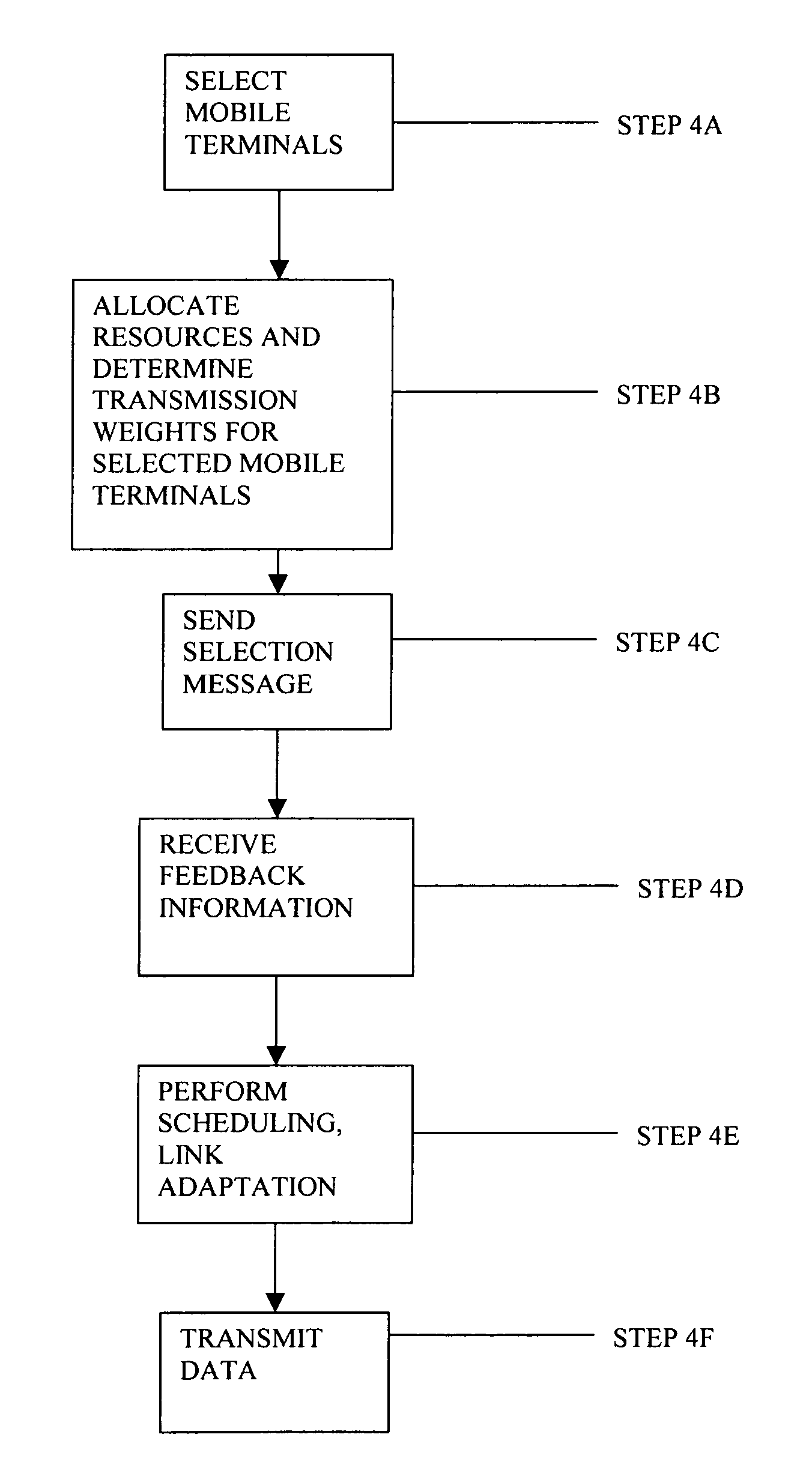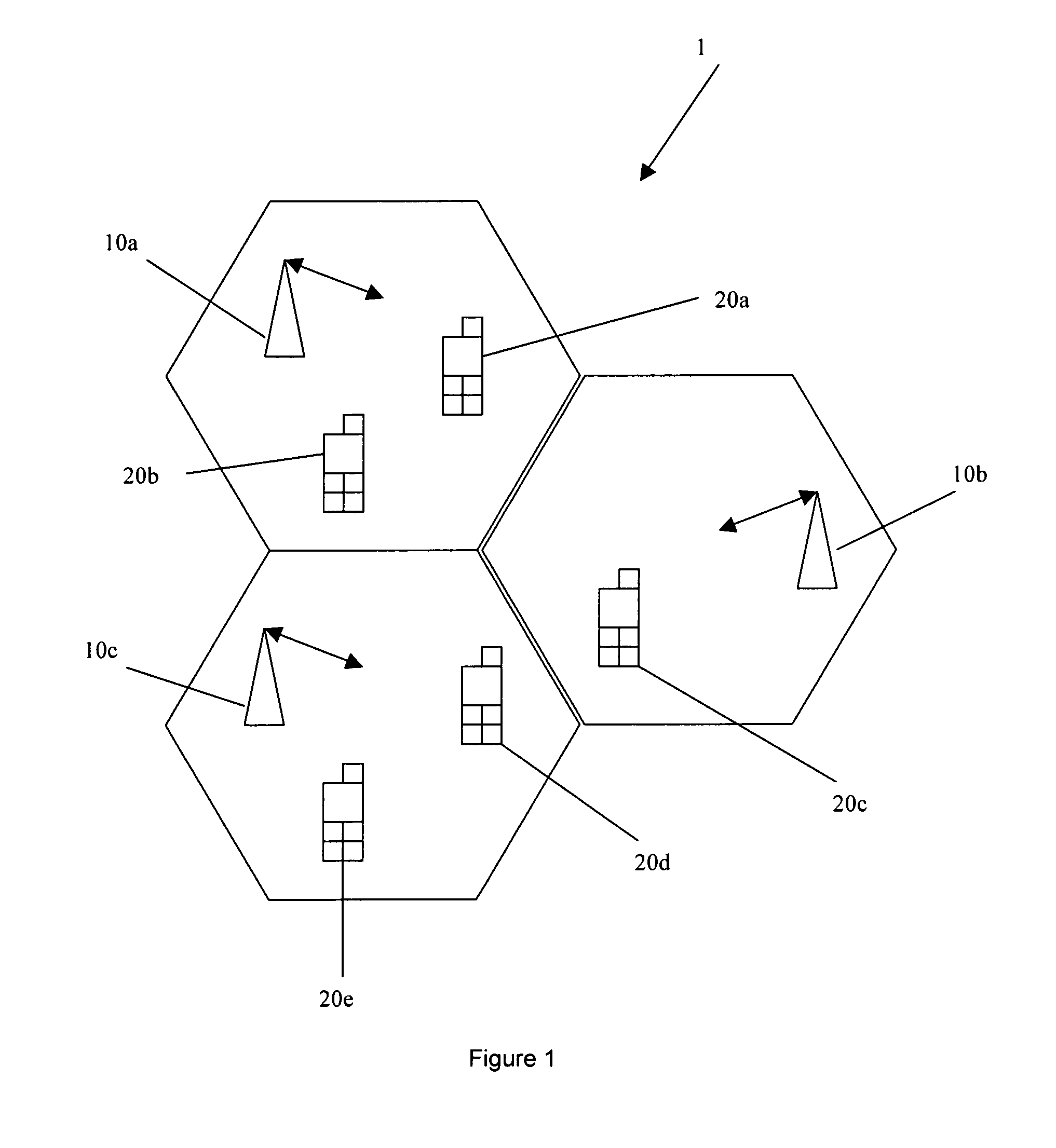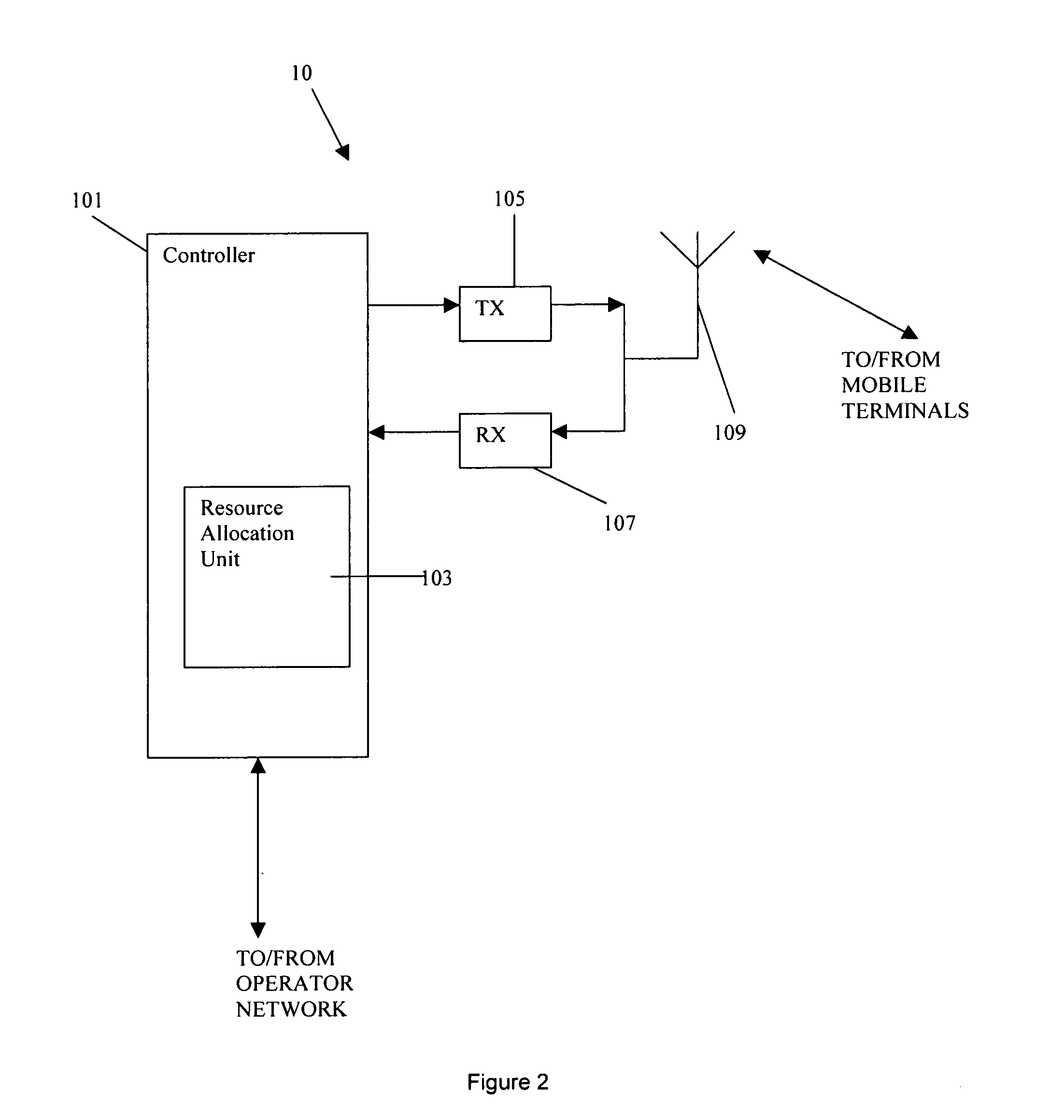Link adaptation in a wireless telecommunications system
- Summary
- Abstract
- Description
- Claims
- Application Information
AI Technical Summary
Benefits of technology
Problems solved by technology
Method used
Image
Examples
Embodiment Construction
[0051]Techniques embodying the present invention are applicable to wireless telecommunications systems such as that illustrated in FIG. 1. As described above, the exemplary system of FIG. 1 includes a number of basestations 10a, 10b and 10c, which communicate over a radio frequency (RF) air interface with mobile terminals 20a, 20b, 20c, 20d, and 20e.
[0052]A simplified block diagram of a basestation for use in accordance with techniques embodying the present invention is shown in FIG. 2. The basestation 10 includes a controller 101, which itself includes a resource allocation unit 103. The basestation 10 also includes transmitter (TX) and receiver (RX) circuitry for transmitting and receiving radio frequency signals to and from an antenna 109 respectively. The antenna provides the wireless communication path with the mobile terminals. The controller 101 communicates data with the transmitter 105 and the receiver 107. The controller is also in communication with the operator network ...
PUM
 Login to View More
Login to View More Abstract
Description
Claims
Application Information
 Login to View More
Login to View More - R&D
- Intellectual Property
- Life Sciences
- Materials
- Tech Scout
- Unparalleled Data Quality
- Higher Quality Content
- 60% Fewer Hallucinations
Browse by: Latest US Patents, China's latest patents, Technical Efficacy Thesaurus, Application Domain, Technology Topic, Popular Technical Reports.
© 2025 PatSnap. All rights reserved.Legal|Privacy policy|Modern Slavery Act Transparency Statement|Sitemap|About US| Contact US: help@patsnap.com



